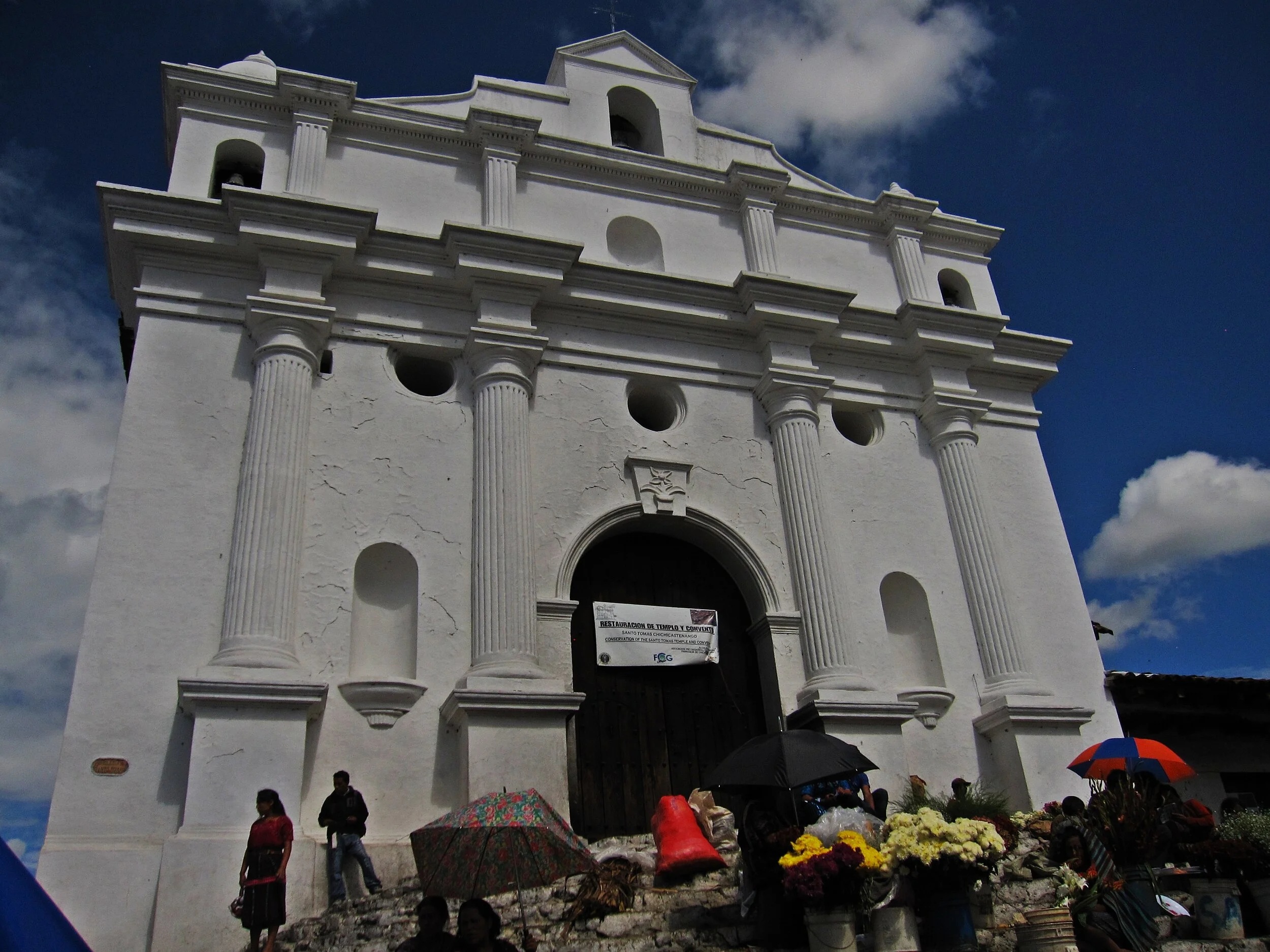Note: This blog is based on how one child in Chichicastenango, Guatemala, may describe this time of year. However, we acknowledge that there are a variety of views about these things both amongst the people of Chichicastenango and scholars.
Hello, my name is Tomas. I am named after our town’s patron saint, Santo Tomas or St. Thomas. Here in Guatemala each town has its own patron saint and each year we hold a big festival to honor him.
Chichicastenango used to be the center of the Mayan empire. When the Spaniards came, we were forced to convert to Catholicism and provide land to build a church. We gave them the land of our ancient worship sights. They thought we came to worship their God, but we were worshiping our gods. In fact, this is the famous Santo Tomas church in Chichicastenango. (See picture below.)
Photo Credit: Lisa Osborne, PT, DPT
Our Mayan religious book, The Popol Vuh, was hidden in the library of this church before it was discovered and taken someplace else. The book details the creation of the universe and our people. We were made from corn, so for us, corn is life.
Many of our festivals and traditions in Chichicastenango are now a mix of Catholicism, Mayan religious beliefs, and Christianity. I think I’ve heard it called syncretism. This month is our town’s big fair. For a week or two the streets are filled with all kinds of food vendors, carnival rides, fireworks, dances, and other activities.
Yesterday, we had the “El Palo Volador” or the flight of the pole. Men will climb this thirty-foot pole and then come down by ropes strapped to their legs. In the ceremonial versions,they may sit on a chair, but other times they come down hanging upside down with the rope strapped to one leg. I can’t wait until I’m old enough to participate. (See video below.)
My great-great-grandparents and great-grandparents have told me the Palo Volador is linked to St. Thomas. They say the image of St. Thomas appeared on a rock on a hill we call Pocohil. Our priests, we call them the Cofradia, went to bring it back into the church. The next day, the image was gone again. They found it back on the same hill. The same thing happened the next day.
The next night, they decided to put two men in charge of watching the image. They decided to climb the tree outside the church to get a better view from which to watch. When they looked down, the branches of the trees had disappeared and in their place they discovered some vines. They attached themselves to the vine to get down the tree and from this we have the story behind the Palo Volador.
Today, December 21, is the culmination of all the activities. We start with dances and activities from early into the morning until late at night. We will also have a special mass at the church, a procession of the different saints, and a transfer of St. Thomas from the current Cofradia to the new ones.
La Balle or dance of the Toritos, an example of the mix of our cultures, is an important religious activity. The dancers are chosen by our Mayan rituals and ceremonies and blessed by the Mayan priest. The dance tells the story of the owner of a farm who won’t let the farm hands deal with a bull. The story and dance ends with the death of the owner by the biggest bull.
I wish you could see some of these dances and traditions. (See video below.) The costumes are beautiful and ornate. The people dancing are often unrecognizable because they dance with masks. Sometimes certain dances have an unmasking ceremony and you get to see who is behind the mask. What a surprise and great fun!
At the end of our fair, we have the largest fireworks show. A castle of wood, filled with fireworks is placed in front of the church. The fireworks can last forty-five minutes and is our final way of honoring St. Thomas.


